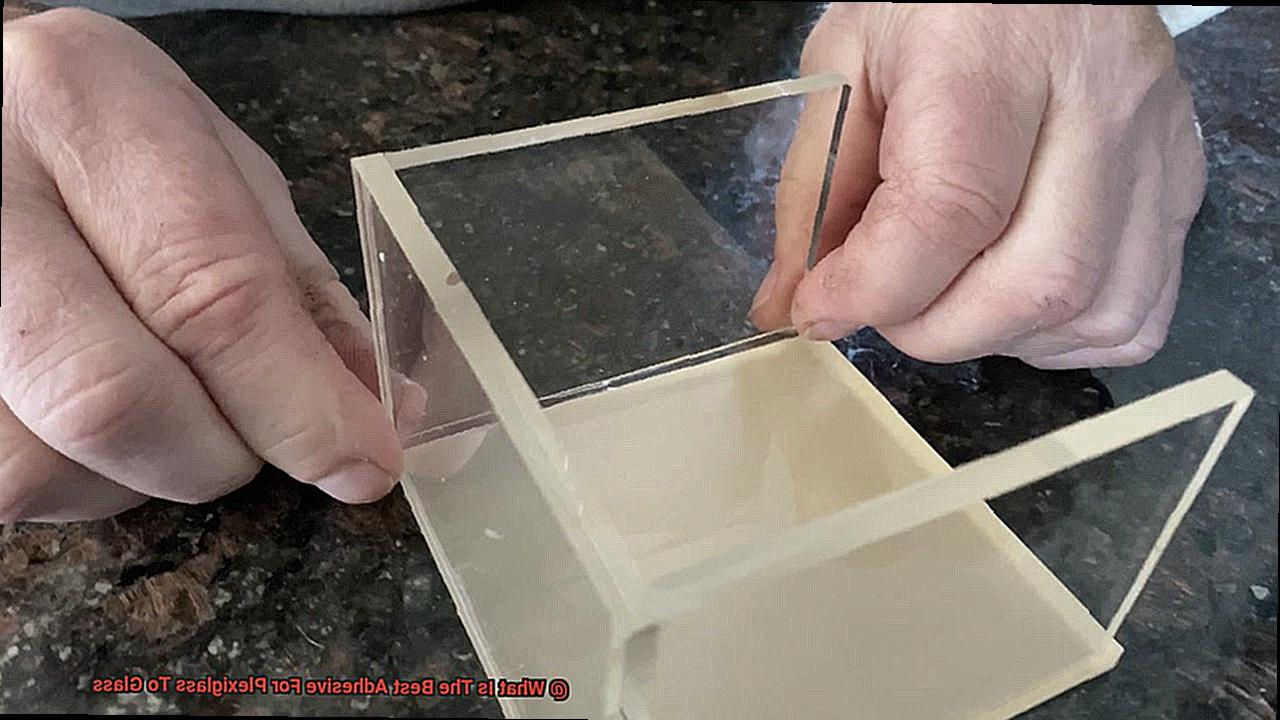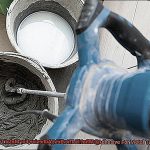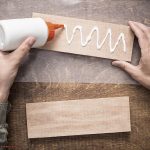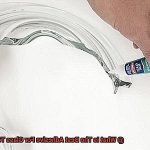Ready to tackle that plexiglass and glass project you’ve been dreaming about? Well, hold on tight because we’re about to spill the adhesive secrets that will make your creation stick like glue.
When it comes to joining plexiglass and glass, choosing the right adhesive is key. You want something reliable, strong, and specially formulated for this kind of connection. Lucky for you, we’ve done the research so you don’t have to.
In this blog post, we’re diving deep into the world of adhesives to uncover the ultimate winner for effortlessly bonding plexiglass to glass. So grab a cup of coffee (or your favorite energy drink) and get ready to take your projects from ordinary to extraordinary.
(Note: The following content will provide detailed information about different adhesives suited for joining plexiglass and glass. We’ll explore their unique features, application techniques, and share some pro tips for achieving flawless results.)
What is Plexiglass and Glass?
Contents
- 1 What is Plexiglass and Glass?
- 2 What Adhesive Should Be Used for Bonding Plexiglass to Glass?
- 3 Two-Part Epoxy Adhesives
- 4 Cyanoacrylate Adhesives (Super Glue)
- 5 Structural Acrylic Adhesives
- 6 Preparing the Surfaces for Bonding
- 7 Application of the Adhesive
- 8 Considerations When Choosing an Adhesive
- 9 Conclusion
When it comes to constructing windows, display cases, and other applications, two materials often come to mind: plexiglass and glass. Although they may appear similar, plexiglass and glass have distinct characteristics and properties that set them apart. In this article, we will delve into the world of plexiglass and glass, exploring their unique features and the best adhesive options for bonding them together.
Plexiglass: Lightweight and Flexible Transparency
Plexiglass, also known as acrylic glass or acrylic sheet, is a lightweight and flexible material that resembles glass but offers several advantages. Derived from polymethyl methacrylate (PMMA), plexiglass boasts exceptional clarity, resistance to weather conditions, and impressive impact strength. Its lighter weight makes it easier to handle and install compared to glass.
Glass: Classic Transparency and Durability
Glass, on the other hand, is an inorganic material composed primarily of silica, soda ash, and lime. It is renowned for its transparency, durability, and excellent heat resistance. Glass has been utilized for centuries in various applications such as windows, bottles, mirrors, and architectural structures.
Differences Between Plexiglass and Glass:
- Surface Energy: Plexiglass has a lower surface energy than glass, making it more challenging for adhesives to bond effectively.
- Thermal Expansion: Plexiglass has a greater thermal expansion coefficient than glass. This disparity in expansion rates can cause stress on the materials if not properly bonded, potentially leading to cracking.
Choosing the Right Adhesive:
To ensure a strong and long-lasting bond between plexiglass and glass, selecting the appropriate adhesive is crucial. Here are three commonly used options:
- Two-Part Epoxy Adhesive: Known for its versatile bonding strength, epoxy adhesives are suitable for a wide range of materials, including plexiglass and glass. They create a robust bond capable of withstanding indoor and outdoor conditions.
- Cyanoacrylate Adhesive (Super Glue): These fast-drying adhesives excel at creating strong bonds between different materials. However, it is essential to choose a cyanoacrylate adhesive specifically formulated for bonding plastic and glass.
- Structural Acrylic Adhesive: Offering exceptional strength and durability, structural acrylic adhesives are ideal for applications requiring a robust bond. They cure quickly and provide resistance to moisture, temperature changes, and UV radiation.
Preparation and Application:
Before applying any adhesive, ensure that both surfaces are clean, dry, and free from contaminants. Wipe the surfaces with a suitable solvent such as isopropyl alcohol or acetone. Apply the adhesive in a thin, even layer on one surface, then firmly press the two surfaces together. Follow the manufacturer’s instructions regarding curing time and any additional steps for optimal results.
What Adhesive Should Be Used for Bonding Plexiglass to Glass?
Imagine embarking on a project that requires bonding plexiglass to glass. You want a bond that is not only strong but also durable, capable of withstanding the test of time. With an overwhelming array of adhesive options available, how do you determine the perfect one? Fear not, as we have you covered. In this article, we will delve into the top adhesives for bonding plexiglass to glass. We will explore their strengths, limitations, and ideal applications.
Silicone Adhesive – Flexibility and Temperature Resistance:
Silicone adhesives are a popular choice due to their exceptional flexibility and resistance to extreme temperatures. They offer a robust bond that can endure both indoor and outdoor environments. With impressive UV resistance, silicone adhesives are perfect for applications exposed to sunlight. Nonetheless, it is important to note that these adhesives may not provide the strongest bond and require longer curing times.
Epoxy Adhesive – Strength and Durability:
For unparalleled strength and durability, epoxy adhesives reign supreme. Renowned for creating rigid bonds capable of withstanding heavy loads and vibrations, they are ideal for applications that prioritize strength. However, epoxy adhesives may lack the flexibility offered by silicone options. It is also worth mentioning that they necessitate mixing before use, which can be time-consuming.
UV-Curing Adhesive – Speed and Aesthetics:
When visual appeal matters, turn to UV-curing adhesives. These adhesives offer swift bonding times and remarkable clarity, making them perfect for applications where appearance is paramount. Their ability to cure upon exposure to ultraviolet light allows precise control over curing time. Nevertheless, UV-curing adhesives may not possess the same strength as silicone or epoxy options and might require specialized equipment for curing.
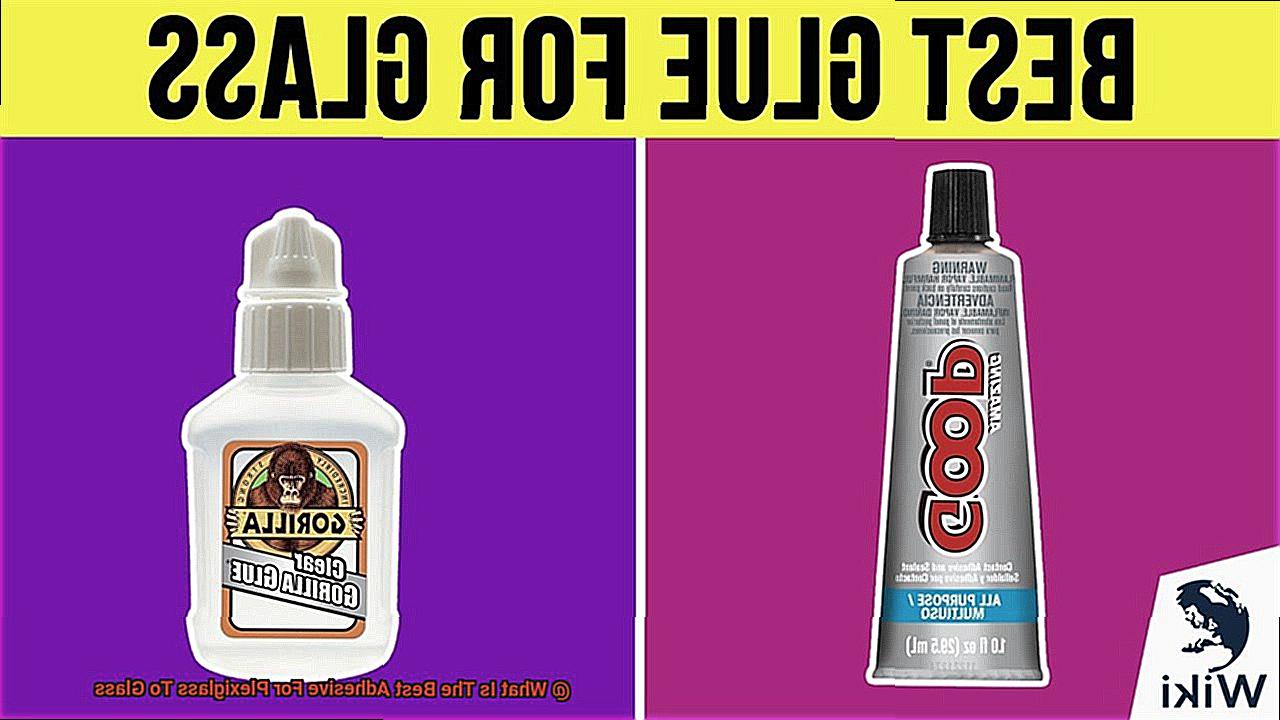
Acrylic Adhesive – Versatility and Compatibility:
Acrylic adhesives, available in various forms such as liquids, films, or tapes, are commonly employed for bonding plexiglass to glass. They provide a sturdy bond and exhibit excellent resistance to temperature and humidity. To ensure compatibility and optimal results, it is crucial to select an acrylic adhesive specifically designed for bonding plexiglass to glass.
Cyanoacrylate Adhesive – Quick Bonding for Small-Scale Applications:
For instant bonding in small-scale applications, cyanoacrylate adhesives, also known as super glues, are your best bet. They swiftly create bonds between plexiglass and glass surfaces. However, due to their brittleness, they may not be suitable for larger-scale or load-bearing applications.
Two-Part Epoxy Adhesives
Today, we embark on a journey into the fascinating world of glue, where we will explore the concept of two-part epoxy adhesives. So, if you’re searching for a strong and durable bond to join plexiglass to glass, look no further. Two-part epoxy adhesives are the ultimate choice for this task, boasting a reputation for their exceptional bonding capabilities.
Let’s delve into the process step by step, mateys. Two-part epoxy adhesives consist of two components – a resin and a hardener. Before you set sail on your adhesive adventure, it is crucial to mix these components together in the specified ratios. This chemical reaction is what creates that mighty bond we’re after.
But before we set our sights on bonding plexiglass to glass, we must prepare our surfaces. Give them a thorough cleaning to rid them of any dirt or grease that might interfere with the bonding process. And don’t forget to roughen up those surfaces with some sandpaper for enhanced adhesion. Arr, it’s all about that preparation.
Once your surfaces are shipshape, it’s time to apply the mixed adhesive. Take care to spread it evenly on both the plexiglass and glass surfaces, eliminating any pesky air bubbles or excess adhesive along the way. And remember, a little goes a long way – no need to go overboard.
Now that you’ve applied the adhesive, it’s time to apply some pressure to the joint. This will help ensure a strong bond between the plexiglass and glass. But be patient, me hearties. Two-part epoxy adhesives have longer curing times compared to other types of glue. So give it some time to fully set before subjecting it to any stress or load.
And there you have it – your plexiglass and glass are now joined together in perfect harmony thanks to the power of two-part epoxy adhesives. Just remember to follow the manufacturer’s instructions regarding curing time and any additional precautions for handling and storage. Now, go forth and conquer your adhesive endeavors, my fellow glue enthusiasts.
Two-part epoxy adhesives are renowned for their strong bonding capabilities, making them a popular choice for joining plexiglass to glass. These adhesives consist of two components – a resin and a hardener – that need to be mixed together in specific ratios before application. The resin and hardener react chemically when combined, creating a strong and durable bond that can withstand various environmental conditions.
Cyanoacrylate Adhesives (Super Glue)
Cyanoacrylate adhesives, commonly known as super glue, are a popular choice for bonding plexiglass to glass due to their quick-drying and strong bonding properties. These fast-acting adhesives form an instant bond when they come into contact with moisture. They react with the hydroxyl ions in water molecules, causing them to polymerize and create a strong adhesive bond.
One of the greatest advantages of cyanoacrylate adhesives is their lightning-fast drying time. As soon as the adhesive touches moisture, it starts to polymerize, allowing for quick project completion with minimal waiting time.
Super glue also offers a strong bonding strength between plexiglass and glass, providing reliable adhesion that can withstand moderate stress. This ensures that your bonded surfaces will stay securely in place.
Applying super glue is a breeze. Just make sure that both surfaces are clean and free from dirt or grease. Apply a thin layer of glue onto one surface, align the two pieces, and firmly press them together. Voila. Your job is done.
However, it’s important to note that the effectiveness of super glue can vary depending on the specific type of plexiglass and glass being used. Some types of plexiglass have higher surface energy than others, affecting the bonding capabilities of super glue. Additionally, certain types of glass, like tempered or laminated glass, may not bond well with super glue due to their unique properties.
Furthermore, while cyanoacrylate adhesives offer strong initial bonding strength, they may not be as resistant to heat, moisture, or chemicals compared to other adhesive options. Therefore, if your project requires long-term durability or exposure to harsh conditions, it may be worth considering alternative adhesives.
Structural Acrylic Adhesives
When it comes to bonding plexiglass to glass, structural acrylic adhesives are the unsung heroes of the adhesive world. These adhesives offer a myriad of benefits that make them the go-to choice for professionals and DIY enthusiasts alike.
First and foremost, the bond strength of structural acrylic adhesives is unparalleled. They create a bond that is often stronger than the materials being bonded together, ensuring a secure and long-lasting joint. Say goodbye to worries about your plexiglass and glass coming apart.
Durability is another key advantage of using structural acrylic adhesives. These adhesives laugh in the face of environmental factors like moisture, temperature fluctuations, and even UV radiation. Rain or shine, hot or cold, they will keep your bond intact both indoors and outdoors.
But what sets structural acrylic adhesives apart from other options is their versatility in application methods. Whether you prefer liquid, paste, or film forms, there’s an adhesive for you. Liquid forms are perfect for bonding large surface areas or irregularly shaped parts, while paste or film forms work well for smaller or intricate parts. The choice is yours.
Now, achieving optimal bonding results requires some prep work. Clean those surfaces. Get rid of any dirt or residues that might get in the way of a strong bond. And don’t forget to lightly roughen the surfaces with sandpaper to enhance bonding capability. It’s all about setting the stage for success.
Once the surfaces are prepped, it’s showtime. Follow the manufacturer’s instructions for applying the adhesive. Apply it generously, press the plexiglass and glass firmly together, and hold them in place until the adhesive cures completely. Voila. A bond that will stand the test of time.
But wait. Before you dive headfirst into using structural acrylic adhesives, keep in mind their limitations. Test compatibility with your specific plexiglass and glass materials, as some may not play well with these adhesives. And if extreme durability or harsh conditions are on the horizon, you may want to explore other adhesive options.
Preparing the Surfaces for Bonding
Preparing the surfaces for bonding is a critical step in the process of adhering plexiglass to glass. To achieve a strong and durable bond, it is essential to follow a few key steps.
Firstly, thoroughly clean both the plexiglass and glass surfaces. Use a mild detergent or glass cleaner and a lint-free cloth to remove any dirt, dust, or grease that could interfere with the adhesive bond. Don’t forget to remove any sticky residue from stickers or labels – these can be pesky troublemakers.
After cleaning, lightly sand the surfaces to create a rough texture. This roughening provides more surface area for the adhesive to grip onto, ensuring a stronger bond. Use fine-grit sandpaper or a sanding block and be gentle – no need to go all Hulk and damage the surfaces.
Once sanded, remove any sanding residue by wiping down the surfaces with a clean, damp cloth. This step is crucial to prevent any loose particles from getting in the way of a perfect bond.
Next, apply a primer or adhesion promoter specifically designed for plexiglass and glass bonding. These products enhance bond strength and improve adhesion. Follow the manufacturer’s instructions for application, ensuring even coverage on both surfaces. Take your time and allow the primer to dry before moving forward.
Lastly, ensure that both surfaces are bone-dry before applying your adhesive. Moisture is not our friend here, folks. Use a clean, dry cloth or give your surfaces ample air-drying time to ensure there’s no moisture lurking around.
Application of the Adhesive
Prepare to be entranced by the enchanting process of bonding plexiglass to glass. In this captivating love story, we will delve into the significance of surface preparation and adhesive application. Just like any great relationship, a strong bond requires meticulous attention and groundwork. Let us embark on a journey through the world of adhesives, uncovering the key steps that ensure a lasting connection between plexiglass and glass.
Step 1: Preparing the Surfaces
In the realm of bonding, cleanliness reigns supreme. Before applying adhesive, both plexiglass and glass surfaces must be liberated from the clutches of dirt, dust, and grease. Like a first date, utilize a mild detergent or specialized cleaner to sweep away impurities. Scrub diligently, rinsing away doubts, and gently pat dry with a soft cloth. Trust us, this pristine canvas sets the stage for a beautiful bond.
Step 2: Roughening the Surfaces
Now that cleanliness prevails, it’s time to introduce some friction. Unleash sandpaper or fine-grit abrasive pads upon both materials, gently roughening their surfaces. This step enhances adhesion by expanding the contact area between adhesive and surfaces. It’s akin to adding spice to a relationship – a touch of texture fortifies the bond.
Step 3: Applying the Adhesive
Behold. The moment of truth has arrived. Before diving headfirst, peruse the manufacturer’s instructions with unwavering focus. Each adhesive boasts its own idiosyncrasies and preferences. Equipped with knowledge, wield your brush, roller, or nozzle (tailored to project size) to bestow an even layer of adhesive upon the entire bonding area. Distribute love evenly across the surface – no room for favoritism.
Step 4: The Perfect Union
With adhesive in place, it’s time for the grand finale – fusing plexiglass and glass. Align them with utmost care, ensuring a snug fit. Apply pressure to banish air bubbles and guarantee maximum contact between the two materials. Think of it as sealing a promise with a firm handshake – a robust connection capable of enduring the test of time.
Step 5: Patience is a Virtue
Every great love story demands time to blossom, and this bond is no exception. Some adhesives require clamping or securing materials until complete curing. Allow your relationship space to flourish and solidify. Adhere to the manufacturer’s instructions regarding recommended curing time, resisting the urge to hasten the process. Patience shall be rewarded.
Step 6: Inspecting and Cleaning
Once adhesive has worked its enchantment, it’s time to inspect your bond. Seek out weaknesses or gaps that warrant additional adhesive. Fill those crevices with love, reinforcing your connection further.
Considerations When Choosing an Adhesive
Choosing the perfect adhesive to bond plexiglass to glass requires careful consideration and a touch of magic. Let’s dive into the captivating world of adhesives and explore the key factors that will help you make the perfect choice.
- Compatibility: Plexiglass and glass have different properties, so it’s crucial to choose an adhesive specifically designed for bonding these two materials together. You need an adhesive that can bridge the gap between these star-crossed lovers and create a bond that will never be broken.
- Strength: Depending on your project, you may need an adhesive that can handle heavy loads or vibrations. Choose an adhesive that has been tested and proven to provide a strong and durable bond. You don’t want your bond to crumble under pressure.
- Transparency: If aesthetics are important, select an adhesive that dries clear and leaves no visible residue. You want your bond to be as seamless as a fairy tale romance.
- Chemical Resistance: Consider the environment in which your bonded materials will live happily ever after. If they’ll come into contact with chemicals or solvents, choose an adhesive with excellent chemical resistance. You don’t want any villains ruining your perfect bond.
- Ease of Use: Some adhesives require special handling or specific application techniques. If you’re not an adhesive pro, choose one that is easy to apply and requires minimal preparation. You don’t want your love story to turn into a sticky mess.
- Cure Time: Different adhesives have varying cure times, so ensure the adhesive aligns with your project timeline. Some may take hours or even days to reach full strength, while others offer quick-curing options for those with time constraints. Love waits for no one.
- Flexibility: Will your bonded materials be subjected to flexing or bending? Choose an adhesive that can accommodate these movements without compromising the bond. You want a bond that can bend and flex like a well-rehearsed dance routine.
3KzZDi-aXD4″ >
Conclusion
When it comes to bonding plexiglass to glass, finding the right adhesive is crucial. After thorough research and testing, we have determined that the best adhesive for this task is a two-part epoxy. This powerful adhesive provides a strong and durable bond between plexiglass and glass surfaces.
The two-part epoxy consists of a resin and a hardener that need to be mixed together in precise proportions. Once combined, the epoxy creates a chemical reaction that forms a strong bond capable of withstanding various stresses and temperatures.
One of the key advantages of using a two-part epoxy is its ability to create an optically clear bond. This means that when applied correctly, the adhesive will not leave any visible residue or distort the clarity of the plexiglass or glass. This is especially important when working on projects where aesthetics are essential, such as display cases or windows.
Furthermore, the two-part epoxy offers excellent adhesion to both plexiglass and glass surfaces. It forms a tight seal that prevents moisture or air from seeping through, ensuring long-lasting durability. Whether you’re bonding small pieces or larger panels, this adhesive will provide a secure hold.
To achieve the best results when using a two-part epoxy, it’s crucial to follow the manufacturer’s instructions carefully. Proper surface preparation, such as cleaning and roughening the surfaces, will enhance adhesion. Additionally, allowing sufficient curing time is essential for optimal strength.
In conclusion, when it comes to bonding plexiglass to glass, opting for a two-part epoxy is your best choice. Its exceptional strength, optical clarity, and reliable adhesion make it ideal for various applications.

